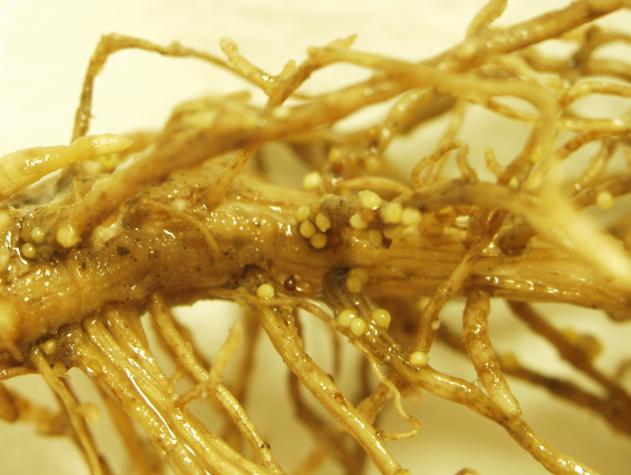COLUMBIA, Mo. – Soybean growers can’t rely on seed treatments alone to combat soybean cyst nematode (SCN), says University of Missouri Extension state plant pathologist Mandy Bish.
Seed treatments can be a valuable part of a commercial soybean production system to protect against early-season diseases, says Bish, who also serves as director of MU’s nematode clinic, SCN Diagnostics. However, soybean genetics and good management practices also play major roles in managing SCN, the leading pathogen of soybean in the U.S. and Canada.
In MU strip trials, ILeVO seed treatment reduced SCN in fields with high SCN levels. However, results were more varied in fields with low to moderate SCN levels. Greenhouse studies also found that ILeVO reduced SCN numbers more effectively than other treatments, although SCN was never entirely controlled in either the field or greenhouse studies, says Bish.
30 years is long time to rely on one tactic
For more than three decades, growers have relied on a soybean trait called PI 88788 as the main defense against SCN. Historically, more than 95% of commercial varieties grown in Missouri have had the PI 88788 resistance, while less than 5% contained the second most common type of SCN resistance, known as Peking, although Peking availability continues to increase.
In field surveys and research plots, MU researchers found the Peking-type resistance substantially reduced SCN populations. However, Bish cautions, Peking is not a “silver bullet.” Missouri SCN populations are already showing early signs of overcoming this resistance as well.
Bish and her team sampled for nematodes in 35 Missouri soybean fields last fall. Preliminary data suggests that SCN can reproduce on soybean with the Peking resistance trait, albeit at lower levels than on varieties with PI 88788.
In MU research trials in Columbia, Peking also showed a yield increase of more than 5 bushels per acre over PI 88788 and susceptible varieties in a high-SCN environment.
“Thirty years is a long time to rely on one management tactic, and we cannot afford to use Peking soybean in the same way,” said Bish.
Bish recommends an integrated approach to managing SCN. This includes a rotation with corn, which is not affected by SCN, and the use of both PI 88788 and Peking-resistance soybean varieties. She also recommends soil tests at the beginning and end of each growing season to assess the effectiveness of SCN management strategies.
SCN Diagnostics continues to provide free SCN egg counts for Missouri soybean farmers thanks to support from the Missouri Soybean Merchandising Council. Printable forms for submitting samples are on the SCN Diagnostics website.
Bish also highlights a new tool from the SCN Coalition called the SCN Profit Checker. The tool helps farmers estimate how much SCN costs them.
